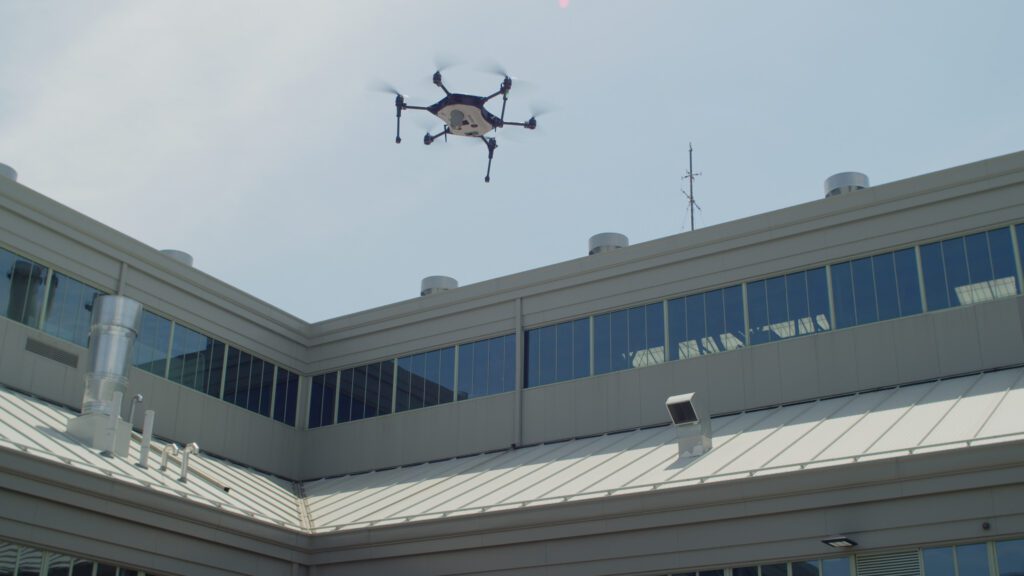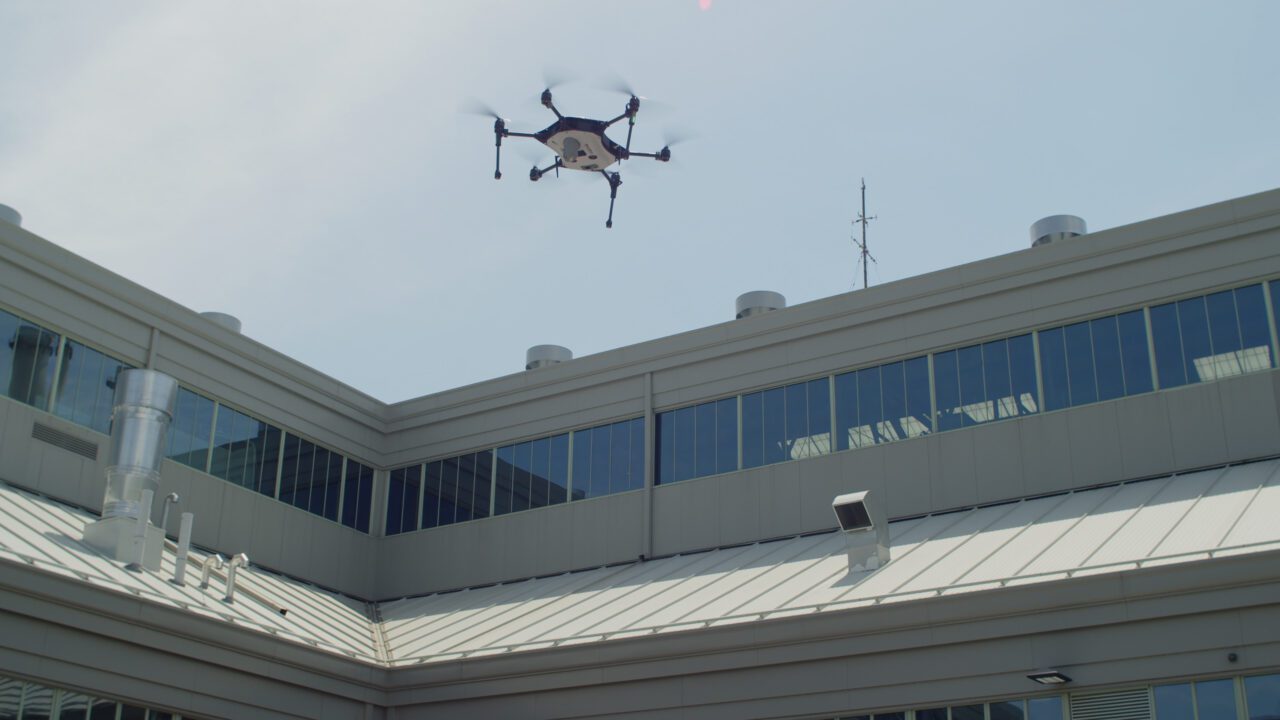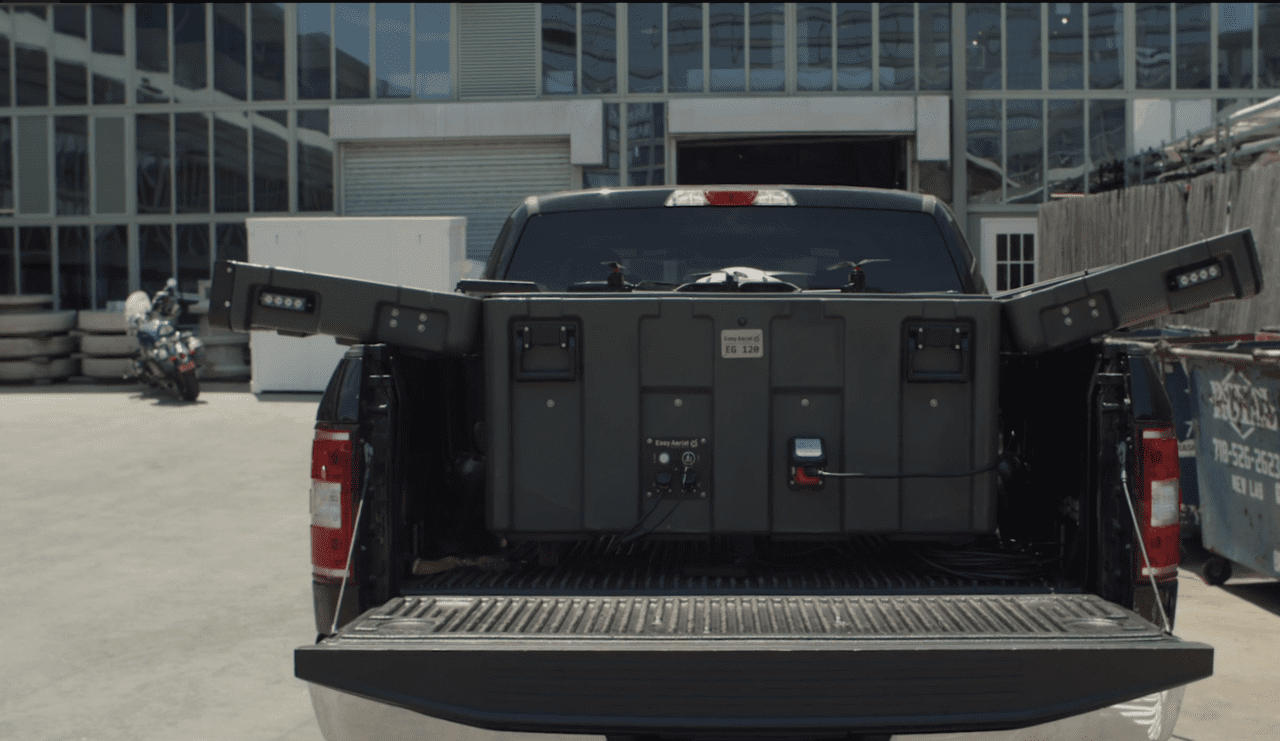Verizon 5G Enables Near-Real-Time Object Detection for Drones


Verizon 5G Edge and AWS enable Easy Aerial’s Easy Guard “drone-in-a-box” to detect objects in near-real-time and to fly for longer periods of time. (Photo: Verizon)
A collaboration between Easy Aerial, Verizon, and Amazon Web Services (AWS) has demonstrated the use of Verizon 5G Edge and AWS Wavelength to enable near-real-time object detection for drones. The Easy Guard ground station, one of Easy Aerial’s product offerings, is described by the company as a “smart” aircraft hangar for takeoff, landing, and charging, and this “drone-in-a-box” solution was selected for exploring 5G integration. Easy Aerial first considered integrating 5G into the Easy Guard at Verizon and Newlab’s Brooklyn, New York-based 5G Studio, which was created to develop a wide range of potential technology solutions.
Through this collaboration, with the 5G-enabled Easy Guard system, successful transmission of telemetry data from Easy Aerial drones was achieved, which made it possible to monitor flights in near-real-time. They were also able to reduce the data transmission rates of the drones by leveraging 5G for communications and reduce latency via use of 5G and mobile edge compute (MEC) on “AI-powered data processing,” Verizon notes in a description of the collaboration with Easy Aerial and AWS.
According to the collaboration announcement from Verizon, the integration of 5G and mobile edge computing for drone operations resulted in savings of about 10% in drone costs and flight time that was increased by about 40%.

The Easy Guard ground station, pictured above, is a “smart” aircraft hangar for takeoff, landing, and charging. (Photo: Verizon/Easy Aerial)
Ivan Stamatovski, CTO of Easy Aerial, explained that a demonstration like this has not been attempted before, in part because of a lack of actual 5G coverage in the U.S.; however, Easy Aerial is optimally positioned to utilize both AWS and Verizon’s 5G Edge. Integrating 5G, according to Stamatovski, “opens up a lot of avenues for using small unmanned aircraft systems [sUAS] for all kinds of applications,” he told Avionics International. The team at Easy Aerial had developed the Easy Guard ground station and, after joining the 5G studio, began working on possible applications for 5G within the Easy Guard system.
Stamatovski explained that “typically, we would have our AI for people recognition and car detection, and we would run it on a local computer, but we said, ‘Since there’s limited space and limited power for it, let’s see if we can put that all on Amazon Edge.’” It was also important to have low latency for object detection so that processing would happen in real-time or near real-time. “We decided to go with Amazon Edge,” he said, “because the cloud is too far out there. The whole setup was made so that the drone talks to Amazon directly, and Amazon does the processing and AI with our algorithms that were deployed on the Edge. Then it communicates back to another 5G unit that is inside our Easy Guard.”
Stamatovski noted that Easy Aerial benefited greatly from using the high bandwidth for unmanned aerial vehicles (UAV) that Verizon 5G Edge and AWS Wavelength are able to provide. By processing data at the edge of the network—in near-real-time—“it shifts the paradigm on what is possible to achieve with airborne sensors,” he said.

Pictured above is the drone landing back on the Easy Guard station after a flight. (Easy Aerial/Verizon)
“I was surprised with how fast it was. I don’t think many people have had a chance to really experience that speed,” Stamatovski shared. “The transfer speed was higher than when we had direct communication via ground link. It opens up possibilities to do all kinds of processing; there is no limitation on the size and weight of the computer that runs on the drone. You can have a whole room of servers running and use all of that processing power for your aerial vehicle.”
A strong partnership formed between Easy Aerial and Verizon as a result of successfully completing this demonstration of 5G integration. “We’re working on a couple of demos with their development center and are going to deploy the same setup, just on the tethered variant of our drones,” Stamatovski remarked. “We’re now exploring all the variations that [Easy Aerial] has made, and seeing how much more we can do with 5G.”
Looking ahead, Stamatovski predicts that within the next five years, there will be new hardware developments available for Internet of Things (IoT0 devices with high bandwidth consumption. “This is really what 5G is all about: giving high bandwidth to all the IoT devices. It will enable a new crop of IoT companies [including Easy Aerial] that can provide real-time situational awareness and all kinds of sensor data to be harvested. It’s something that does not exist today.” For Easy Aerial, he said, the coming developments will help them to stay connected and utilize more of the computing power in the cloud.
The post Verizon 5G Enables Near-Real-Time Object Detection for Drones appeared first on Aviation Today.
—————
Boost Internet Speed–
Free Business Hosting–
Free Email Account–
Dropcatch–
Free Secure Email–
Secure Email–
Cheap VOIP Calls–
Free Hosting–
Boost Inflight Wifi–
Premium Domains–
Free Domains






